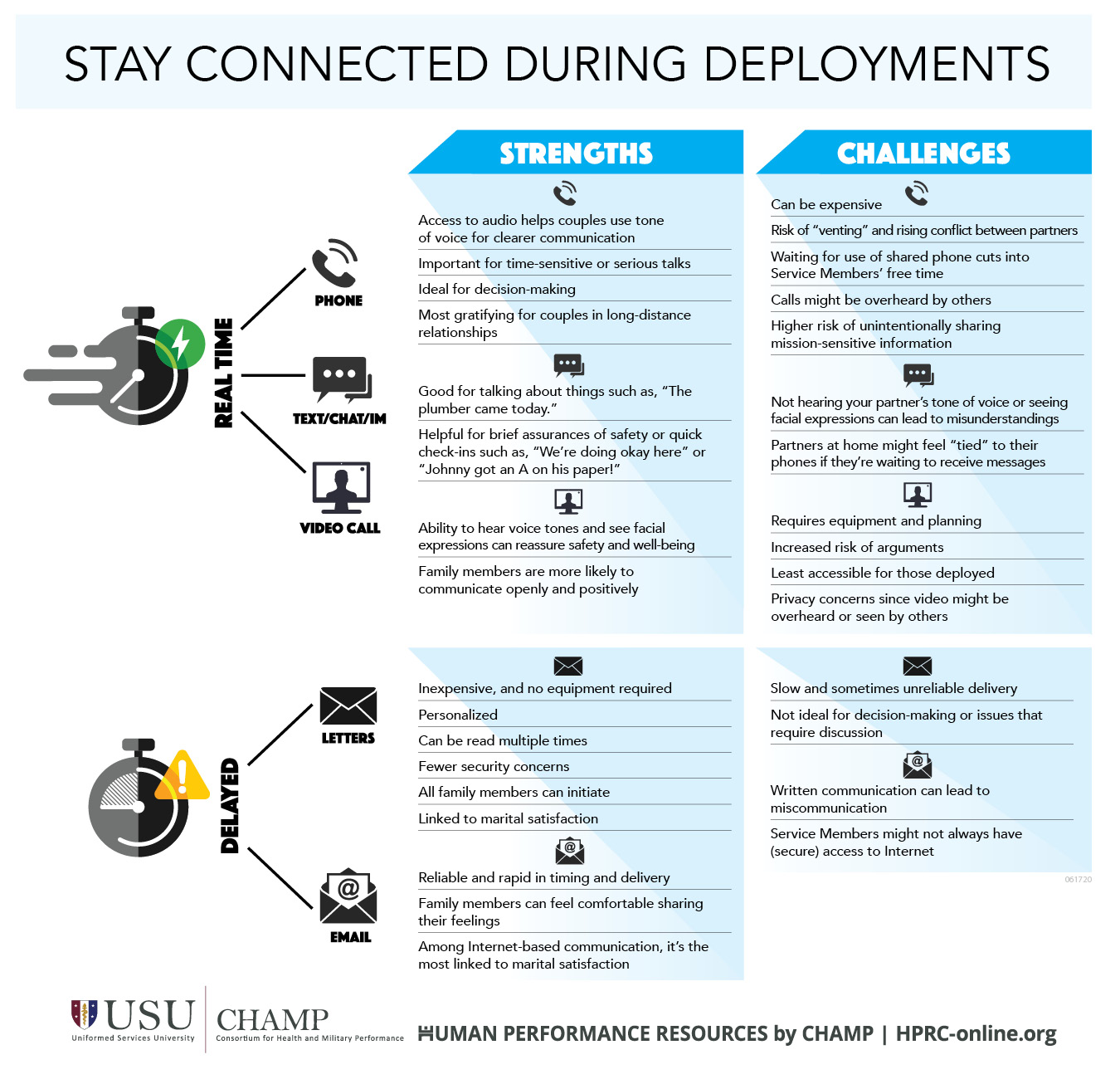Communication isn’t “one size fits all” when it comes to deployed Service Members and their families. Learn some different ways to connect during your deployment. Note the strengths and challenges for the different styles too. And work with your loved ones to decide what works best for your family.

Published on: July 17, 2020
Stay Connected During Deployments
There are strengths and challenges associated with real-time communication (phone calls, chat, text, instant messages, and video calls) and delayed communication (letters and email).
For phone calls, access to audio helps couples use tone of voice for clearer communication. They’re also important for time-sensitive or serious talks. Phone calls are ideal for decision-making, and they’re most gratifying for couples in long-distance relationships. But phone calls can be expensive. There’s also a risk of “venting” and rising conflict between partners. Waiting for use of shared phone cuts into Service Members’ free time, and calls might be overheard by others. There’s a higher risk of unintentionally sharing mission-sensitive information too.
Text, chat, and instant messages are good for talking about things such as, “The plumber came today.” And they’re helpful for brief assurances of safety or quick check-ins such as, “We’re doing okay here” or “Johnny got an A on his paper!” There are challenges such as not hearing your partner’s tone of voice. Seeing facial expressions can lead to misunderstandings. And partners at home might feel “tied” to their phones if they’re waiting to receive messages.
For video calls, the ability to hear voice tones and see facial expressions can reassure safety and well-being. Family members also are more likely to communicate openly and positively. Video calls require equipment and planning. There’s an increased risk of arguments, and video calls are least accessible for those deployed. And there are privacy concerns since video might be overheard or seen by others.
Letters are inexpensive, and no equipment is required. They’re personalized and can be read multiple times. There are fewer security concerns, and all family members can initiate. Letters are linked to marital satisfaction too. Challenges associated with letters include slow and sometimes unreliable delivery. And they’re not ideal for decision-making or issues that require discussion.
Emails are reliable and rapid in timing and delivery. Family members can feel comfortable sharing their feelings. Among Internet-based communication, email messages are most linked to marital satisfaction. But written communication can lead to miscommunication, and Military Service Members might not always have secure access to the Internet.




